New evidence confirms that the ringfort was once a settlement for high-ranking medieval figures — and parts of the site may be 1,000 years older than previously thought.
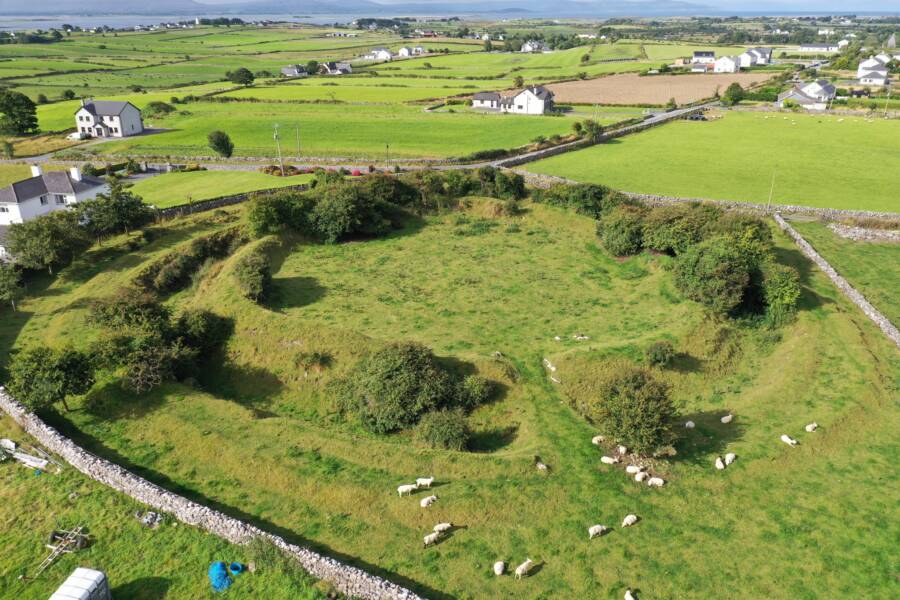
University of Galway/FacebookRathgurreen Ringfort, once a settlement for medieval nobles and rulers.
An eight-week archaeological excavation from the University of Galway has revealed that a ringfort near Galway Bay once served as a settlement for high-status rulers and nobles during Ireland’s early medieval period.
The theory about Rathgurreen Ringfort’s noble history was first proposed and investigated by Professor Michael Duignan in the late 1940s, but it hasn’t been confirmed until now. Furthermore, the new excavations have also revealed that parts of the site were, in fact, 1,000 years older than previously believed. The team that made this discovery was composed of professionals, students, and volunteers under the direction of Dr. Michelle Comber and Dr. Noel McCarthy.
Rathgurreen Ringfort, A Medieval Settlement For High-Status Individuals
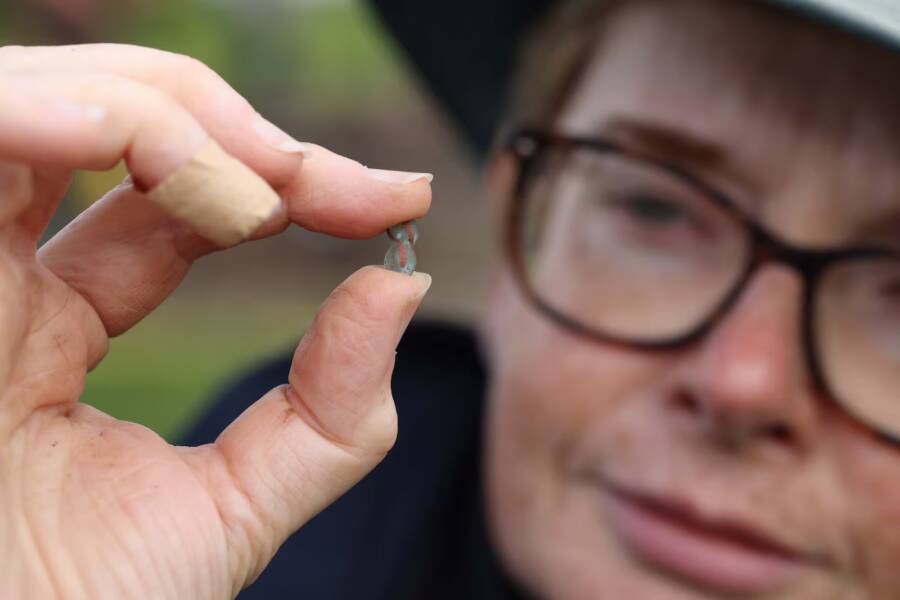
Aengus McMahonThe University of Galway’s Michelle Comber with a turquoise and red glass bead from Rathgurreen Ringfort.
As reported by The Irish Times, the archaeology team spent eight weeks digging at the ringfort, during which they found a number of glass beads of varying colors, including blue, turquoise, and red. Many of the beads are believed to date back to the early medieval period, but it’s also possible that some of them originated from the Iron Age, the era just before the early medieval period.
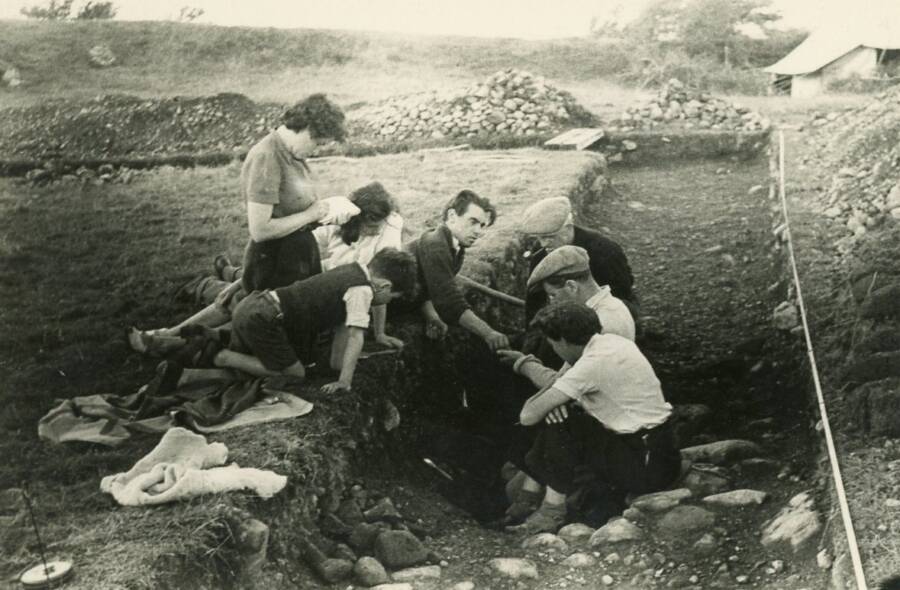
University of Galway/FacebookExcavations at the ringfort in the 1940s.
“We are working in an ancient high-status settlement located roughly midway along the Atlantic seaboard,” Comber said. “In no sense, though, would it have been viewed as ‘wild’ or isolated — on the contrary it was part of a wider community and had links with other parts of Ireland, Scotland and mainland Europe. The adjacent coast provided relatively easy access to the outside world — seaways were the motorways of their day.”
They also unearthed medieval pottery that has origins in northern France and amber beads that bear resemblance to ones found in Scandinavian countries along Viking trade routes. In addition, the archaeology team uncovered evidence of the manufacture of valuable purple dye, such as remnants of dog-whelk shellfish that would have been used to produce the rare coloring.
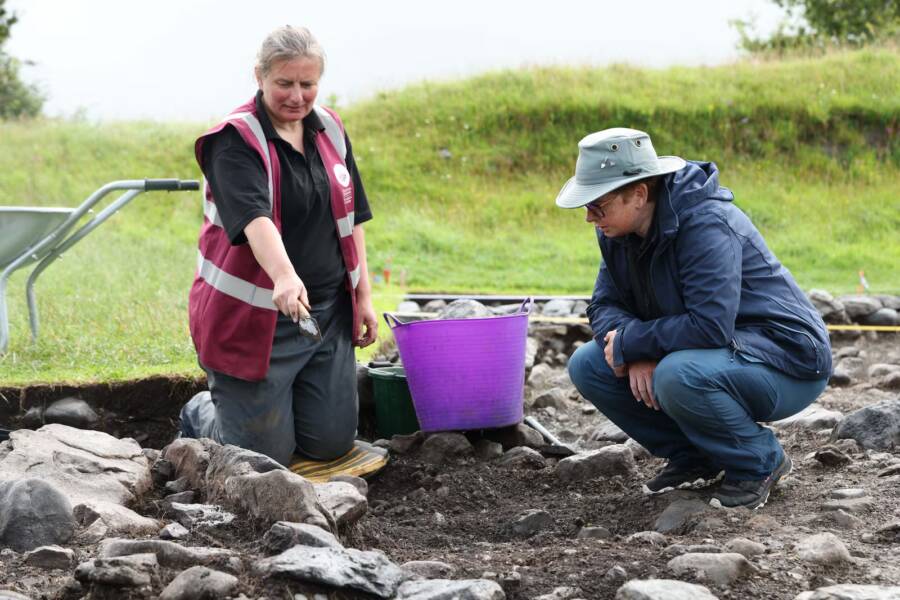
Aengus McMahonDr. Michelle Comber and Susan Curran at the dig site.
“We have evidence of continuity and change at this site — a settlement that possibly dates back to the Iron Age, that was later developed into a very fine ringfort,” Comber said. “A new home with links to ancestors would certainly have been very attractive to early medieval nobility.”
Archaeological Discoveries Highlight Galway’s Historical Significance
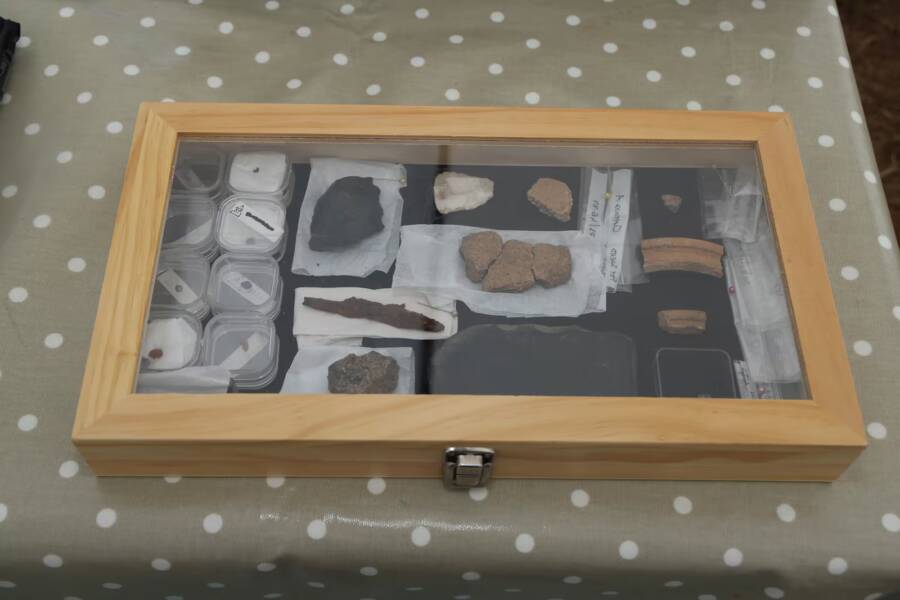
Aengus McMahonMedieval glass beads, an Iron Age knife, and ancient axe heads were just some of the artifacts unearthed at the site.
The settlement is in the region of Maree, the name of which appears in several early Irish legends and is often associated with warriors or other important figures who bear the same name. This, in combination with the valuable archaeological evidence unearthed at the ringfort, confirms that Rathgurreen was home to a noble or ruling family.
These discoveries reframe the importance of Galway in the early medieval period and show that the region was not isolated or cut off from the rest of the world during that time.
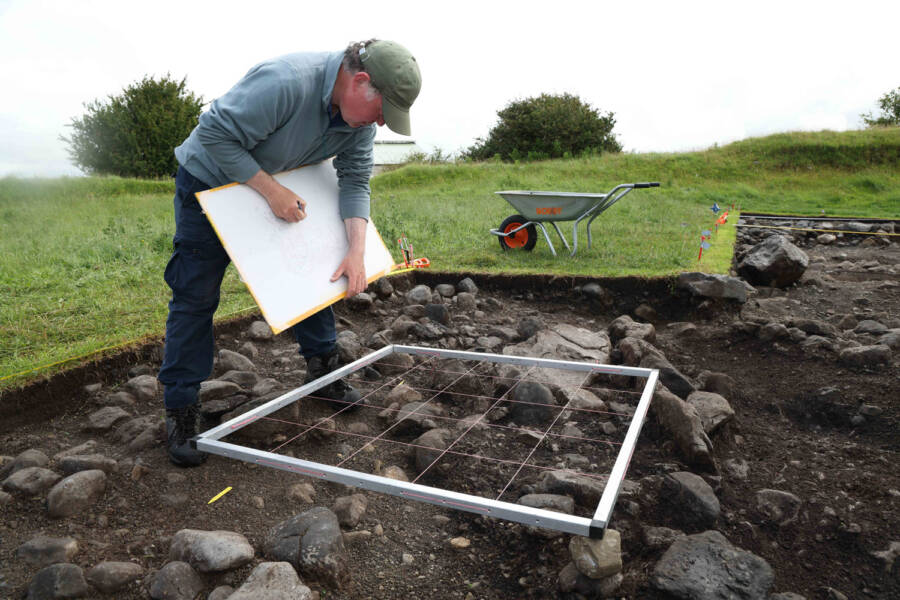
Aengus McMahonArchaeologists at Rathgurreen Ringfort.
“The big takeaway from this site is that a place like Galway had a wider significance in the past, and that significance translates into the present,” Comber added. “This one site has many tales to tell and roles to play. People come to the west of Ireland and they think it’s isolated and remote, but Maree’s ancient remains tell us that western Ireland was not cut off from the wider world, geographically or culturally.”
This excavation was just the beginning of the team’s research, as well. The team said they hope to continue digs at the site in 2026 and potentially conduct similar research at other locations in the future.
After learning about this medieval settlement in Galway, see inside Ireland’s McDermott’s Castle and read about its haunted history. Then, read about some enchanting creatures from Irish folklore.





